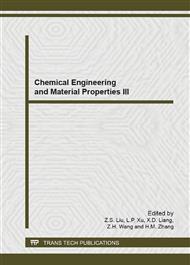p.544
p.548
p.553
p.557
p.562
p.566
p.570
p.574
p.577
Corrosion Rule and Amendment Method Research on the Natural Gas Long-Distance Pipeline in the Northwest Region
Abstract:
At present, transportation of the oil and gas resources in our country relies mainly on long-distance buried pipeline; pipe is commonly steel spiral welded pipe. The long-distance pipeline adopts buried way, crossing section of the complex terrain. Different soil properties, and soil have different degree and strong corrosion to the pipe, and the leakage point also is not easy to be found in time, as well as the underground pipeline maintenance needs a large number of earthwork, more hard than the construction of new line. Therefore, long-term, safe and steady operation is the main task of long-distance pipeline. How to prevent the corrosion of buried pipeline damage has long been an important part of pipeline engineering.
Info:
Periodical:
Pages:
562-565
Citation:
Online since:
August 2014
Authors:
Keywords:
Price:
Сopyright:
© 2014 Trans Tech Publications Ltd. All Rights Reserved
Share:
Citation:


